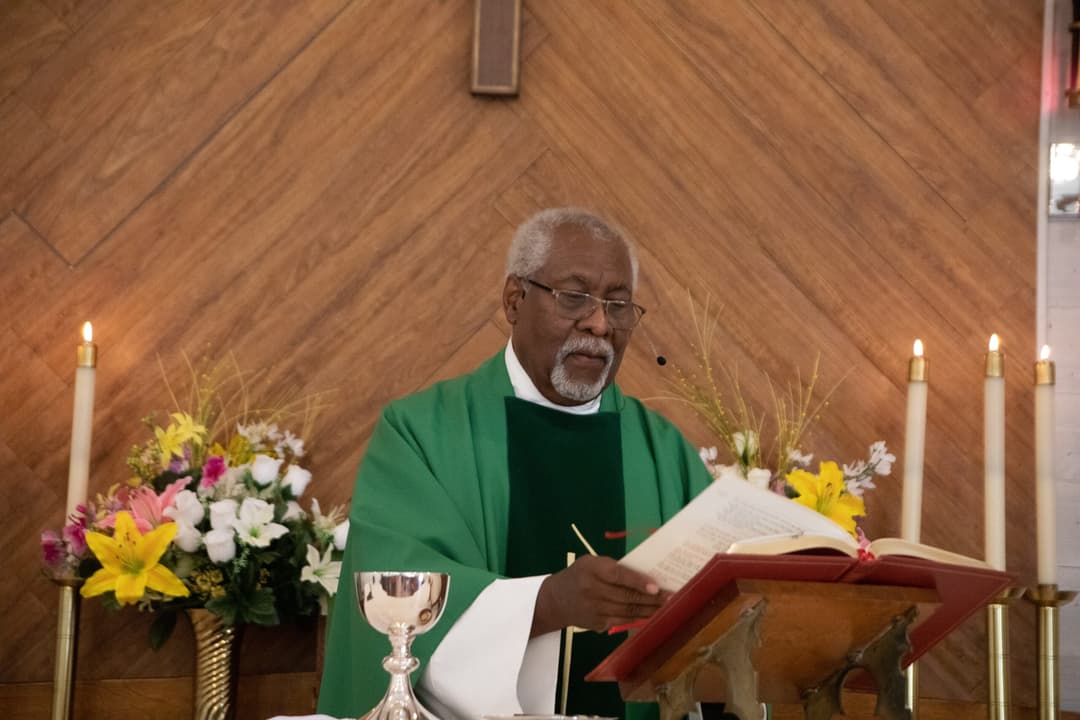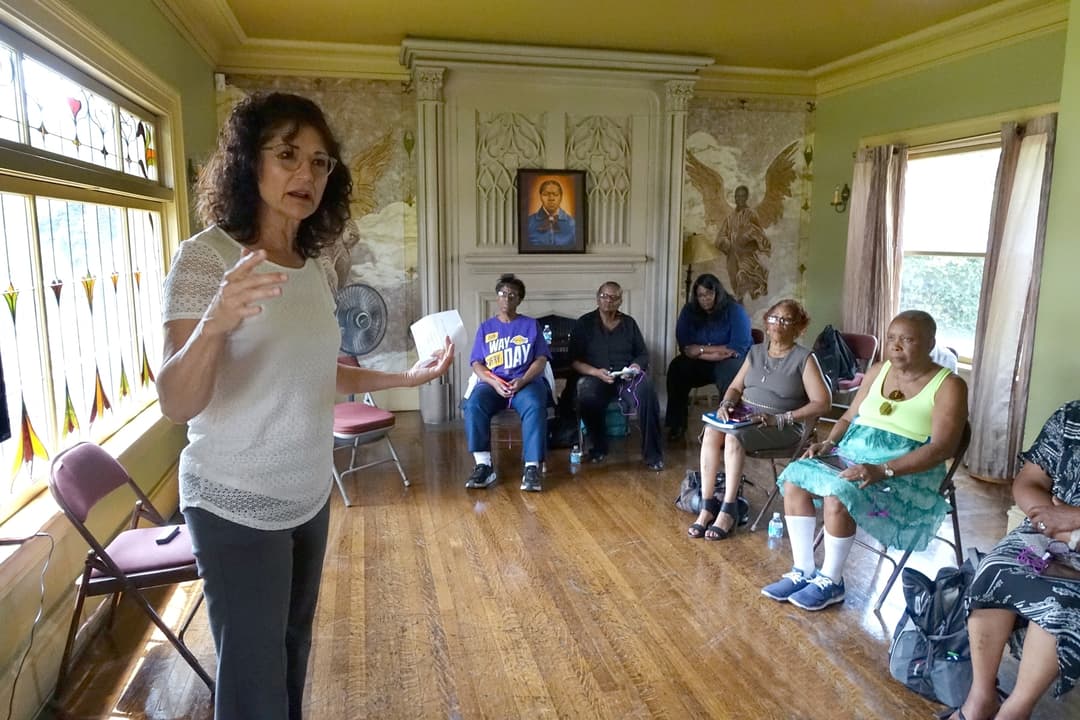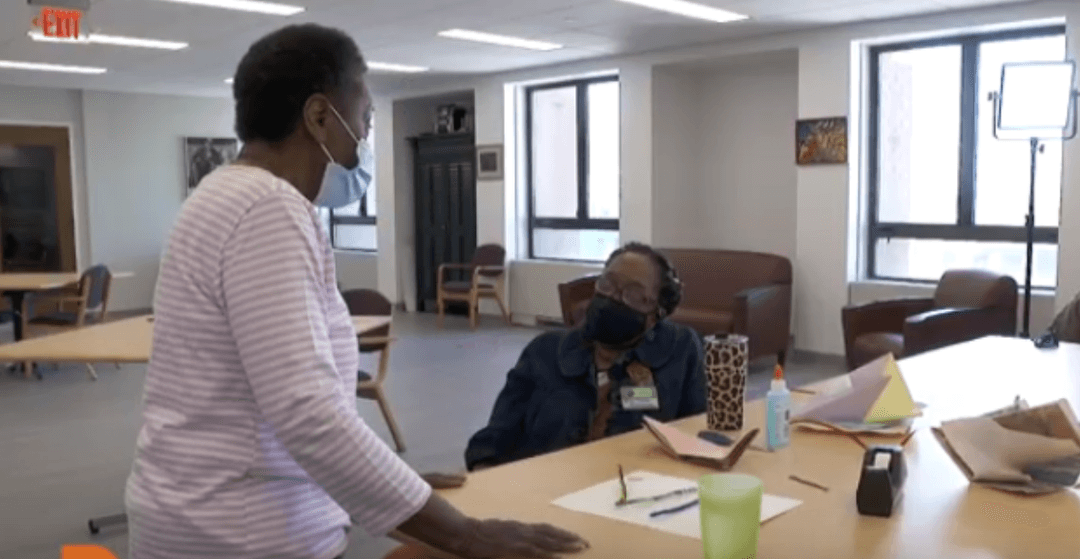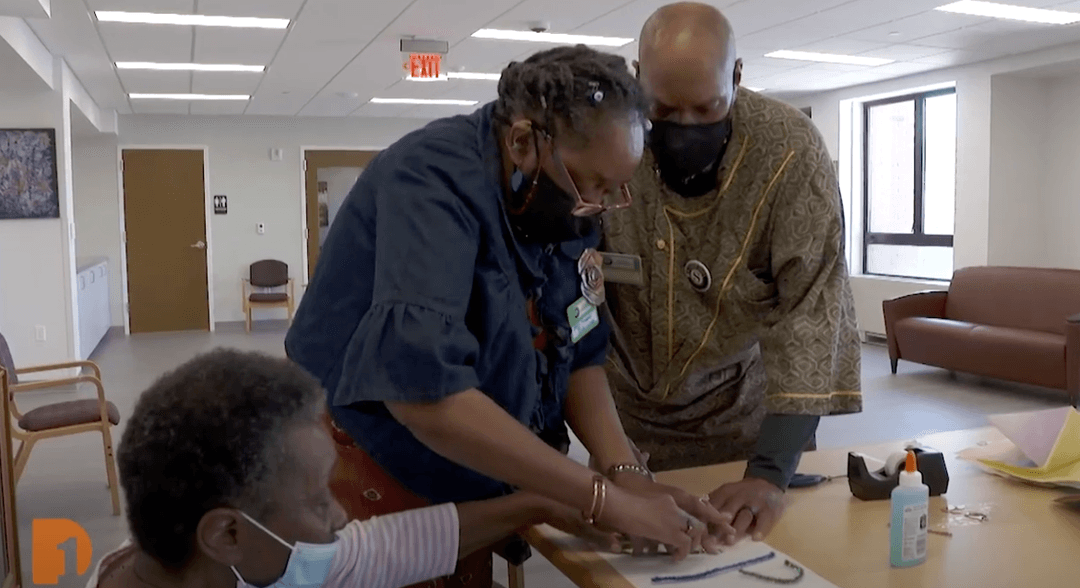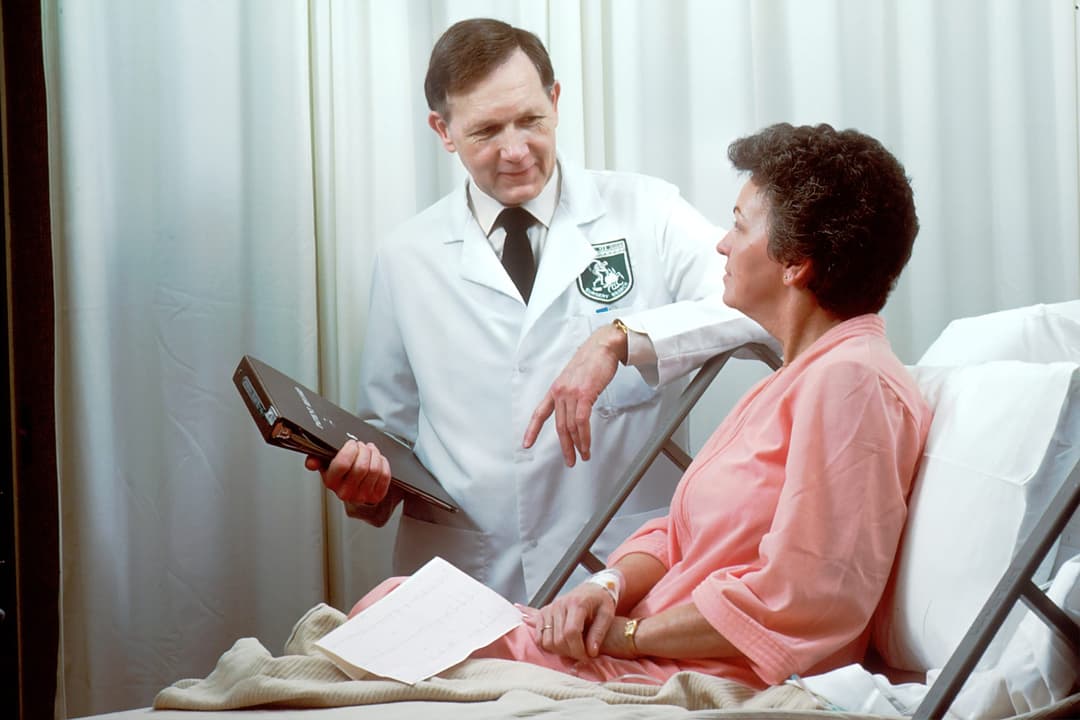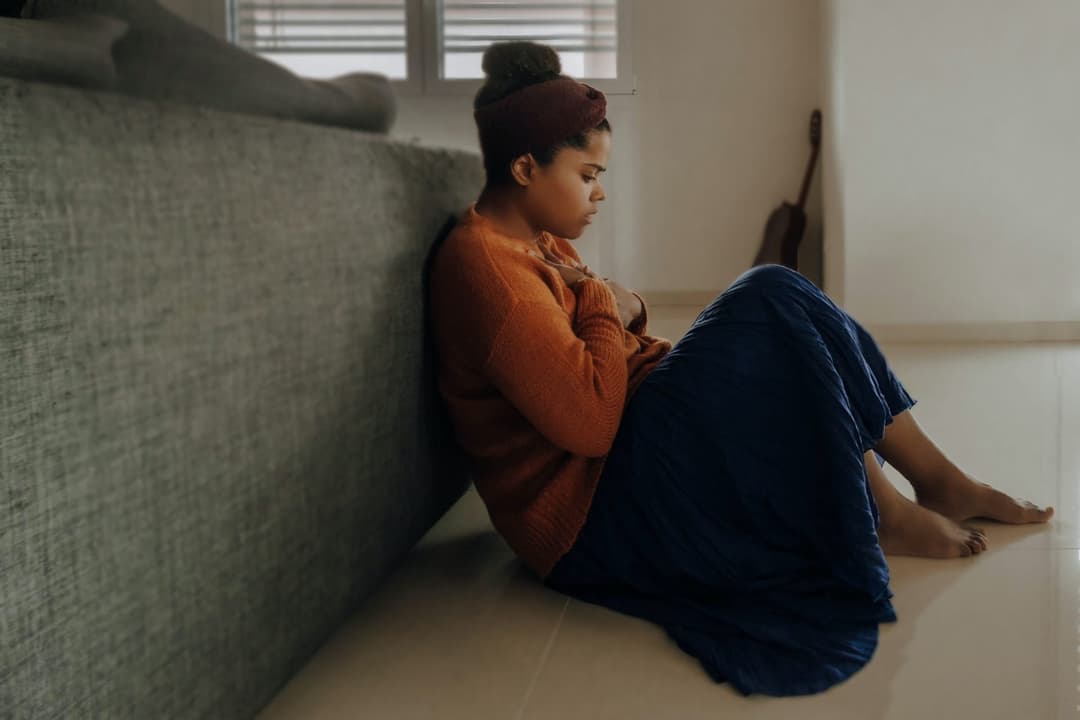Solutions Journalism: Finding Emotional Support for Caregivers
Nov 29, 2021
By Deanna Dewberry
“This story was produced through the New York & Michigan Solutions Journalism Collaborative, a partnership of news organizations and universities dedicated to rigorous and compelling reporting about successful responses to social problems. The group is supported by the Solutions Journalism Network.
The collaborative’s first series, Invisible Army: Caregivers on the Front Lines, focuses on potential solutions to challenges facing caregivers of older adults.”
ROCHESTER, N.Y. (WHEC) — “Hey buddy,” said my husband, Gary. He nudged my father gently, trying to rouse him. My 85-year-old father’s favorite spot in our walk-out basement is his motorized recliner where he dozes most of the day. Parkinson’s has robbed him of his ability to remain alert for any appreciable amount of time.
“Hey, Champ!” my dad answered, shaking off sleep. We knew immediately it was going to be a good day. Dad was lucid and engaged. That’s not always the case. My 85-year-old father suffers from Parkinson’s induced dementia caused by clumps of proteins called Lewy bodies that are slowly destroying his brain’s neurons and neurotransmitters, stealing the very essence of who he is.
“How ya’ doin’ son?” my dad asked. He adores my husband and worries about his thin son-in-law who seems almost frail of late.
“I’m great, Pops,” Gary answered. “Let’s get you changed.”
Our morning routine is always the same. I get our children ready for school while Gary helps Dad to the bathroom. There he cleans and dresses him, then helps him brush the teeth that are left and rinse off the ones that have been soaking in a glass of Polident.
After I get the kids on the bus, I cook Dad’s usual. He calls it his “Grand slam thank you ma’am,” cheesy, soft scrambled eggs, bacon, French toast drowning in powdered sugar and maple syrup complete with white mocha-flavored coffee. Breakfast is Dad’s favorite meal of the day, so we try to pack in as many calories as possible to slow his frustratingly persistent weight loss.
Then I’m off to work. But Gary stays behind. Dad can’t be left alone, and my husband is his primary caregiver.
My husband and I are part of the sandwich generation, adults sandwiched between the challenges of caring for children as well as aging parents. We’re not alone. According to the Family Caregiver Alliance, more than half of African American caregivers are sandwiched as well. So when I was asked to take part on a collaboration of 10 news organizations tasked with finding elder care solutions, I enthusiastically said yes.
In this edition of the series, I examined some of the emotional and psycho-social challenges faced by caregivers of color. And I didn’t have to look far. My husband sat down with me for a candid conversation about his life as a primary caregiver, a role he assumed almost a year ago after we took my father out of a skilled nursing facility.
We’d been forced to put him there in 2019 when my mother and I were both battling cancer. After my mother died and I recovered, my husband and I had some hard decisions to make regarding my dad’s care. The COVID crisis made our decision clear. We had to bring Dad home. Months of window visits had taken its toll on Dad’s emotional and physical well-being.
“As time went on, we could tell he was missing his family,” Gary said.
But Dad requires 24-hour care. Bringing him home would mean that Gary couldn’t work. I would be the sole wage earner, and our lives would change dramatically.
“We talked about it and said, ‘Okay, this is what we need to do.’ How hard was that for you?” I asked Gary.
“He’s family. He’s always been family. I missed him. That was the easiest part,” he answered.
While the decision to bring Dad home may have been easy, the isolation of caregiving is not.
My father and the television are Gary’s only companions during the day. Dad needs help with everything that those who study caregiving call ADL’s, activities of daily living. According to the Family Caregiving Alliance, Black and Hispanic caregivers are more likely than their white peers to experience what it calls “high burden caregiving” with 57% of Black caregivers and 45% of Hispanics providing care at least 30 hours per week.
“So this is now my fulltime job,” Gary said.
“Is that full-time job fulfilling?” I asked.
Gary paused for several seconds as he thought about his answer. I stare at him, silently encouraging him to be honest with me. He fiercely loves my father, but the isolation of caregiving has been far more difficult than he imagined.
“Sometimes,” he finally answered. “I think the fatigue and the frustration of not having normal outlets, normal social outlets…” he said, his voice fading.
Actually, my husband has no social outlets. He’s not attended one social function outside our home in almost a year.
“I’m not saying I don’t get a little anxious, a little overwhelmed sometimes,” he said quietly. “There’s no other solution.”
To clarify, there are other solutions. But there are none that would work for our family. We moved to Rochester from Texas almost five years ago. We have no other family members here. We simply will not consider ever putting Dad in a nursing home again. But he needs full-time care, and live-in caregiving is not financially feasible. So Gary cares for Dad during the day, and I feed him dinner, give him medications, and put him to bed in the evening. Because Dad has dementia and tends to wander, we have alarms that sound when he’s moving. Gary handles overnight duties, and I take over on weekends.
“I can’t think of the last time we went on a date, or we went out to eat or we went to a movie,” I said shaking my head incredulously.
“And that’s a major toll if the truth be known,” Gary answered.
“What resources would you need to help make your job easier?” I asked.
“A shift worker,” he said laughing.
“But seriously, to be able to get out of the house for a few hours, a couple of times a week to do something for yourself and not have to feel guilty about it,” he said quietly.
I was awed by his honesty. This is a conversation we’ve not had as a couple. It took my work as a journalist to really understand the impact caregiver isolation is having on him.
“Do you know any other men who stay at home and take care of an elderly relative?” I asked.
“Not at this time,” he answered, shaking his head.
“Not one single person?” I prodded.
“No.”
“That has to be isolating?” I said, leaning forward sympathetically.
He paused again. And this time, he didn’t meet my eyes.
“Well yeah, it is. But I love him. He’s Dad.”
And therein is the challenge and joy of caregiving. My father is an extraordinary man who sacrificed so much to provide for me. It’s both humbling and gratifying to have the privilege of caring for him during the final years of his life. We just wish there was more support for families like ours.
My colleagues Adria Washington at the Democrat Chronicle and Tyronda James at The Minority Reporter covered one solution that’s working well for African American caregivers in Los Angeles California.
The Family Caregiver Support Center at the University of Southern California is the home of the Los Angeles Caregiver Resource Center. It hosts support groups and caregiver meetings on the USC Campus and makes social workers and counselors available.
It also provides free services for caregivers ages 18 and older. Those services include information and referral, education and training events, support groups, family consultations, online services and respite care.
That center is now collaborating with Black churches to provide services to those parishioners and community members. You can read more about the center on the Democrat Chronicle’s website on Tuesday and the Minority Reporter’s website on Monday.
Stay Connected
Subscribe to One Detroit’s YouTube Channel.
Catch the daily conversations on our website, Facebook, Twitter, and Instagram @detroitperforms
Related Posts
Leave a Reply
Your email address will not be published. Required fields are marked*
